- Home›
- Healthy Living›
- 8 Exercises Women Must Try To Reduce Knee Discomfort
8 Exercises Women Must Try To Reduce Knee Discomfort
By: Priyanka Maheshwari Fri, 11 Aug 2023 12:49:20
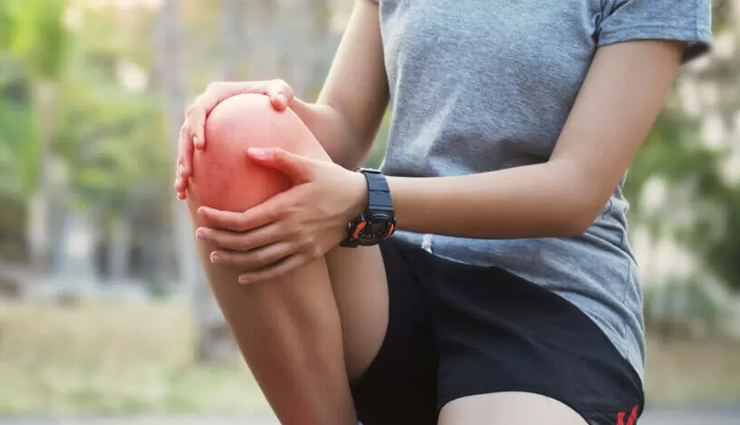
Knee discomfort is a common issue that can affect individuals of all ages and genders, but it has been observed that women are more susceptible to experiencing knee discomfort due to various physiological and lifestyle factors. The knee is a complex joint that plays a crucial role in providing stability and mobility to the lower body. It is composed of bones, ligaments, tendons, and cartilage, all of which work together to facilitate movement and weight-bearing activities.
In women, several factors contribute to knee discomfort. One prominent factor is the anatomical differences between male and female knees. Women often have wider hips, which can lead to a greater angle between the thigh bone and the shin bone, known as the Q angle. This increased Q angle can place additional stress on the knee joint and its surrounding structures, potentially leading to discomfort and an increased risk of certain knee conditions such as patellofemoral pain syndrome or anterior knee pain.
Hormonal fluctuations also play a role in knee discomfort among women. Estrogen, a hormone that fluctuates throughout the menstrual cycle, has been linked to changes in ligament and muscle flexibility. During certain phases of the menstrual cycle, women might experience increased joint laxity, which can affect the stability of the knee joint and potentially contribute to discomfort or injury.
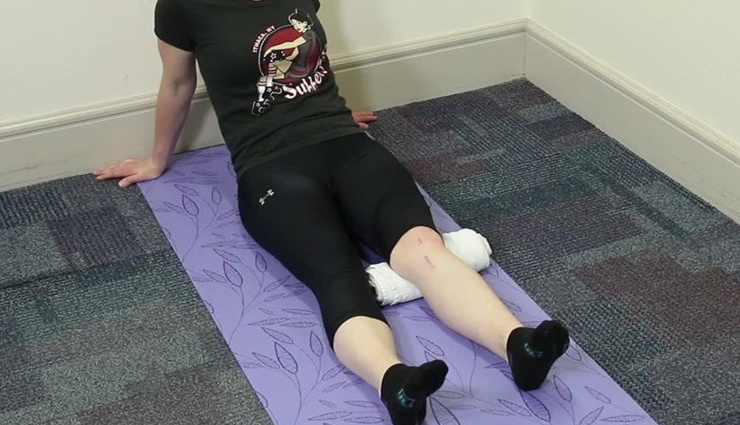
# Quad Sets
Initial Position:
- Sit on a flat surface or lie down on your back on a comfortable surface like a bed or exercise mat.
- Keep your legs out straight in front of you.
Engage Your Muscles:
- Tighten the muscles on the top of your thigh (quadriceps) of one leg. Imagine pushing the back of your knee down onto the surface you're sitting or lying on.
- Your foot should remain relaxed and not move during the exercise.
Hold and Contract:
- Hold the contraction for about 5 to 10 seconds, focusing on squeezing your quadriceps muscles as hard as you can.
Relax:
- After holding the contraction, relax your leg completely. Let go of the tension in your quadriceps.
Repeat:
- Perform the same sequence of tightening and relaxing for a total of about 10 repetitions for each leg.
Breathing:
- Breathe normally during the exercise. Inhale before tightening the muscle and exhale as you release the contraction.
Frequency:
- You can perform quad sets multiple times a day, gradually increasing the number of repetitions as your muscles become stronger.
Remember:
- Perform quad sets on both legs, even if only one leg needs strengthening.
- Make sure you're not holding your breath while doing the exercise.
- Start with a comfortable level of contraction, gradually increasing the intensity as your muscle strength improves.
- If you feel pain or discomfort while doing the exercise, stop immediately and consult a healthcare professional.
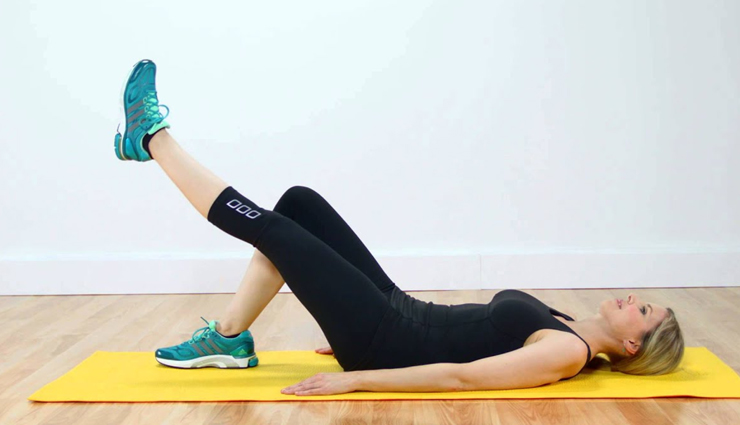
# Straight Leg Raises
Initial Position:
- Lie down on your back on a comfortable surface, such as an exercise mat or a bed.
- Keep your legs straight and extended.
Engage Your Core:
- Gently engage your core muscles by drawing your navel in toward your spine. This will help stabilize your lower back during the exercise.
Perform the Leg Raise:
- Choose one leg to start with.
- Keeping your leg straight and your toes pointing upward, slowly lift the chosen leg off the floor. The movement should be controlled and smooth.
- Lift your leg to a height that is comfortable for you and within your range of motion. It doesn't need to be very high.
Hold and Lower:
- Hold your leg in the raised position for a moment or two, focusing on engaging your quadriceps muscles.
- Slowly lower your leg back down to the starting position with control.
Repeat:
- Perform around 10 to 15 repetitions for one leg. You can start with fewer repetitions and gradually increase as your strength improves.
Switch Legs:
- After completing the desired repetitions on one leg, switch to the other leg and repeat the same process.
Breathing:
- Breathe in as you lower your leg and exhale as you lift it.
Frequency:
- You can perform straight leg raises a few times a week, allowing a day or two of rest in between sessions to prevent overexertion.
Remember:
- Focus on the quality of the movement rather than lifting your leg very high.
- If you experience any discomfort, pain, or strain in your lower back or hips, stop the exercise and consult a healthcare professional.
- Keep your movements controlled and avoid using momentum to lift your leg.
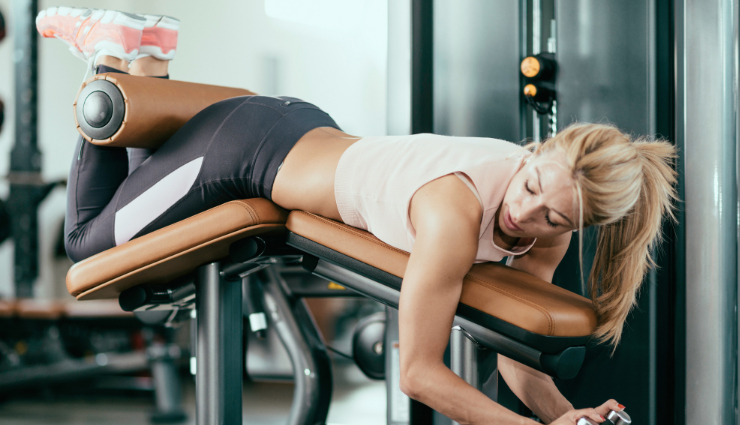
# Hamstring Curls
Initial Position:
- Lie face down on a leg curl machine, if available, with your ankles positioned under the padded bar.
- Alternatively, you can perform this exercise using resistance bands or an exercise ball.
Adjust Equipment (if using a machine):
- If using a leg curl machine, adjust the machine to fit your body size. The padded bar should be resting just above your heels.
Engage Core:
- While lying face down, engage your core muscles to stabilize your lower back.
Perform the Curl:
- Bend your knees to bring your heels toward your glutes (buttocks). Focus on contracting your hamstrings to perform this movement.
- If using a leg curl machine, push against the padded bar as you curl your legs upward.
Hold and Contract:
- Hold the contracted position for a moment, squeezing your hamstrings.
Lower the Legs:
- Slowly lower your legs back to the starting position in a controlled manner.
Repeat:
- Aim for around 10 to 15 repetitions for one set. You can adjust the repetitions based on your fitness level and comfort.
Switch to Other Exercises:
- After completing the desired number of repetitions, switch to other leg exercises or take a short rest before performing additional sets.
Breathing:
- Inhale as you lower your legs and exhale as you curl them.
Resistance Bands or Exercise Ball:
- If using resistance bands, anchor them to a stable surface and loop them around your ankles. Lie face down and follow the same curling motion, using the bands for resistance.
- If using an exercise ball, lie on your back with your feet on the ball. Lift your hips off the ground and curl the ball toward your glutes.
Remember:
- Focus on maintaining proper form and control throughout the exercise.
- Start with a weight or resistance level that allows you to perform the exercise with correct technique.
- Consult a fitness professional or healthcare provider before beginning any new exercise program, especially if you have any existing injuries or medical conditions.
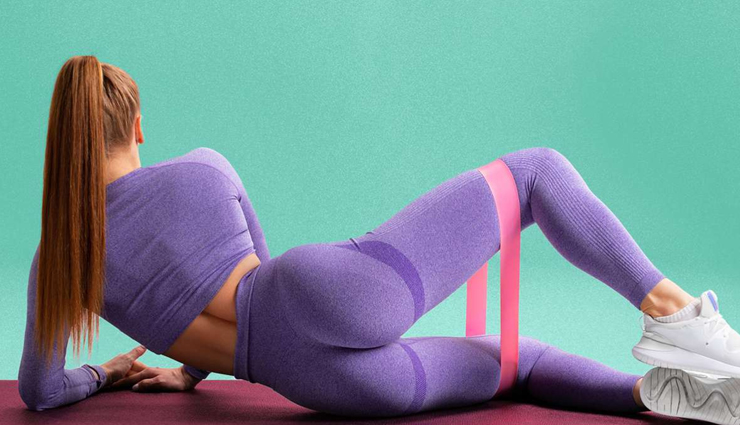
# Clamshells
Initial Position:
- Lie on your side on a comfortable surface, such as an exercise mat. Keep your legs and hips stacked on top of each other.
Bend Your Knees:
- Bend your knees to about a 90-degree angle. Your feet should be in line with your spine.
Engage Your Core:
- Gently engage your core muscles to stabilize your torso throughout the exercise.
Perform the Clamshell:
- Keeping your feet touching each other, lift your top knee as high as you comfortably can. This movement should resemble the opening of a clamshell.
Hold and Squeeze:
- At the top of the movement, pause for a moment and focus on squeezing your glute muscles.
Lower Your Knee:
- Slowly lower your knee back down to the starting position.
Repeat:
- Aim for around 15 to 20 repetitions on one side. You can adjust the number of repetitions based on your fitness level.
Switch Sides:
- After completing the desired repetitions on one side, switch to the other side and repeat the same process.
Breathing:
- Inhale as you prepare for the movement, and exhale as you lift your knee.
Variations:
- To add resistance, you can place a resistance band just above your knees, which will create additional tension during the exercise.
Remember:
- Focus on maintaining proper form and control throughout the movement.
- Keep your feet touching throughout the exercise.
- Avoid using your lower back to lift your knee; the movement should come from your hip.
- If you experience discomfort or pain, stop the exercise and consult a healthcare professional.
- Incorporate clamshells into your lower body workout routine to target and strengthen your hip muscles, helping to improve stability and prevent injuries.
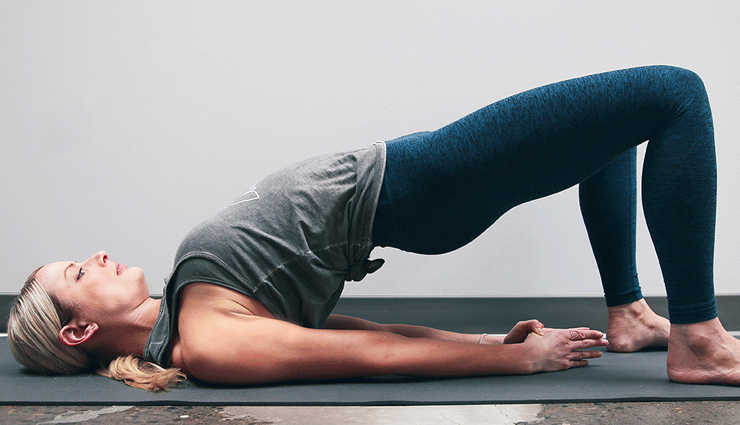
# Glute Bridges
Initial Position:
- Lie down on your back on a comfortable surface, such as an exercise mat. Bend your knees and keep your feet flat on the ground, hip-width apart.
Engage Core:
- Gently engage your core muscles by drawing your navel in toward your spine. This will help stabilize your lower back during the exercise.
Perform the Bridge:
- Press through your heels and lift your hips off the ground. Your body should form a straight line from your shoulders to your knees at the top of the movement.
- Squeeze your glutes as you lift your hips.
Hold and Squeeze:
- At the top of the movement, pause for a moment and focus on fully engaging your glute muscles.
Lower Your Hips:
- Slowly lower your hips back down to the starting position in a controlled manner.
Repeat:
- Aim for around 12 to 15 repetitions for one set. Adjust the number of repetitions based on your fitness level.
Breathing:
- Inhale as you lower your hips, and exhale as you lift them.
Variations:
- To add challenge, you can place a resistance band just above your knees, which will create additional tension during the exercise.
Full Range of Motion:
- Focus on achieving a full range of motion by lifting your hips as high as possible without overarching your lower back.
Variations for Single-Leg Glute Bridges:
- To increase the intensity and target each glute individually, you can perform single-leg glute bridges. Extend one leg straight out and lift your hips using the other leg as support.
Remember:
- Keep your weight centered on your heels and not your toes during the bridge movement.
- Avoid pushing your hips too high, as this can lead to hyperextension of the lower back.
- Maintain a neutral spine throughout the exercise, with your chin slightly tucked.
- Incorporate glute bridges into your lower body workout routine to strengthen your glute muscles and improve hip stability.
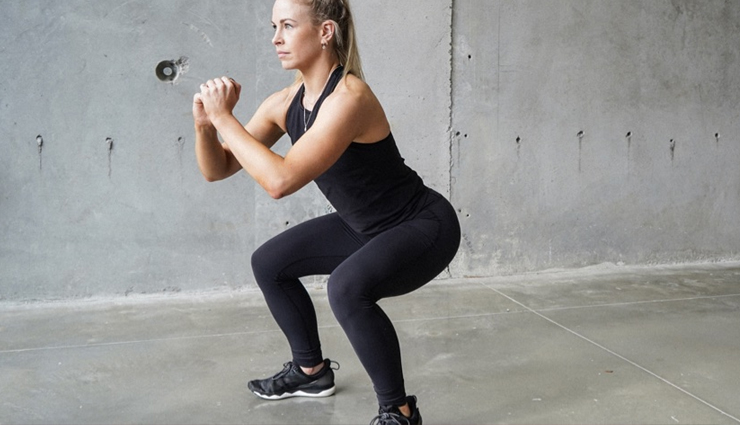
# Partial Squats
Initial Position:
- Stand with your feet shoulder-width apart or slightly wider. Keep your toes pointing forward or slightly turned outward.
Engage Core:
- Gently engage your core muscles to stabilize your torso throughout the exercise.
Perform the Squat:
- Initiate the movement by bending your knees and lowering your hips. Imagine sitting back into an imaginary chair.
- Lower your body only to a comfortable depth where your thighs are approximately parallel to the ground. You don't need to go as deep as a full squat.
Knee Alignment:
- As you squat, ensure that your knees are tracking over your toes and not collapsing inward.
Torso Position:
- Keep your chest up and your back straight. Avoid leaning too far forward or rounding your back.
Hold and Push Through Heels:
- Pause for a moment at the bottom of the squat, then push through your heels to return to the starting position.
Repeat:
- Aim for around 10 to 15 repetitions for one set. Adjust the number of repetitions based on your fitness level.
Breathing:
- Inhale as you lower into the squat, and exhale as you push back up.
Variations:
- If you're comfortable with partial squats, you can gradually increase the depth of your squat over time to progress to a full squat.
Remember:
- Focus on maintaining proper form and control throughout the movement.
- Don't let your knees extend beyond your toes as you squat.
- Start with a partial range of motion and gradually increase it as your flexibility and strength improve.
- If you have any knee or hip issues, consult a healthcare professional before attempting partial squats or any other exercise.
- Partial squats can be a useful exercise for beginners or those working on building strength in the quadriceps and glutes.
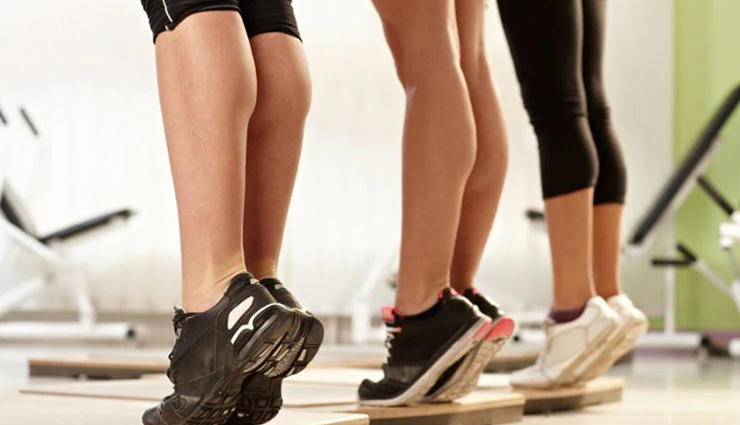
# Calf Raises
Initial Position:
- Stand upright with your feet hip-width apart. You can do this exercise on a flat surface or on an elevated step for greater range of motion.
Engage Core:
- Gently engage your core muscles to stabilize your body.
Perform the Raise:
- Slowly rise up onto the balls of your feet by lifting your heels. Focus on using the calf muscles to perform the movement.
- Keep your upper body aligned and avoid leaning forward or backward.
Hold and Contract:
- At the top of the movement, pause for a moment and squeeze your calf muscles.
Lower Your Heels:
- Gradually lower your heels back down to the starting position. You can let your heels dip slightly below the level of your toes for a full stretch.
Repeat:
- Aim for around 15 to 20 repetitions for one set. Adjust the number of repetitions based on your fitness level.
Breathing:
- Inhale as you lower your heels, and exhale as you raise them.
Variations:
- To add resistance or challenge, you can hold dumbbells by your sides or use a calf raise machine at the gym.
Single-Leg Calf Raises:
- For a more advanced version, you can perform calf raises on one leg at a time to target each calf individually.
Remember:
- Focus on maintaining proper form and control throughout the exercise.
- Avoid using momentum to lift your heels; the movement should come from your calf muscles.
- If you experience discomfort or pain, stop the exercise and consult a healthcare professional.
- Incorporate calf raises into your lower body workout routine to strengthen your calf muscles, which are important for activities like walking, running, and jumping.
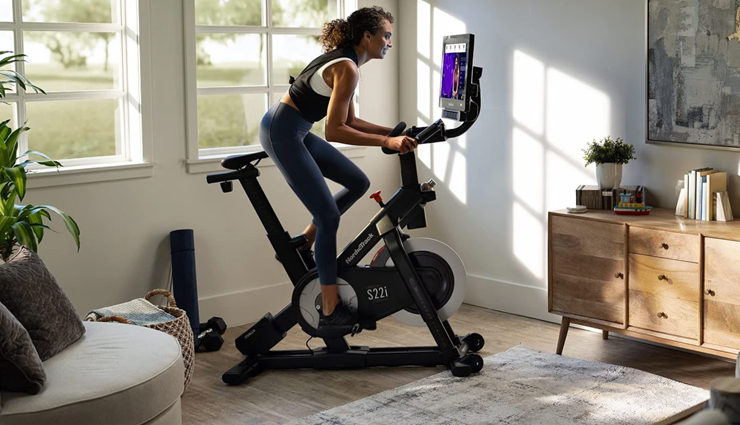
# Stationary Bike or Cycling
Adjust the Bike:
- Adjust the seat height so that your legs are almost fully extended when the pedals are at the lowest point. Your knees should have a slight bend at the bottom of the pedal stroke.
Seat Position:
- Position the seat horizontally so that you can comfortably reach the pedals while keeping a slight bend in your elbows.
Warm-Up:
- Start with a gentle warm-up by pedaling slowly for about 5 minutes to prepare your muscles for the workout.
Choose Resistance:
- Adjust the resistance level on the stationary bike to your desired intensity. Start with a moderate level if you're a beginner.
Pedal Technique:
- Place your feet on the pedals and start pedaling. Keep the balls of your feet on the pedals and your heels down.
- Push down with one foot while lifting the other foot up, alternating in a circular motion.
Posture:
- Maintain an upright posture with a relaxed grip on the handlebars. Keep your back straight and your core engaged.
Pedaling Speed:
- Aim for a moderate pedaling speed (cadence) of around 80 to 100 revolutions per minute (RPM). Adjust the resistance to achieve this cadence.
Interval Training (Optional):
- To add variety and challenge, you can incorporate interval training by alternating between periods of higher intensity (faster pedaling and/or higher resistance) and lower intensity (slower pedaling and/or lower resistance).
Cool Down:
- After your workout, gradually reduce your pedaling speed and resistance to cool down. Continue pedaling slowly for about 5 minutes.
Stretch:
- After your cool down, perform some gentle stretches to help release tension in your leg muscles.
Remember:
- Maintain proper posture throughout the exercise to prevent strain on your back and shoulders.
- Listen to your body and gradually increase the intensity and duration of your workouts as your fitness level improves.
- Stay hydrated by drinking water before, during, and after your workout.
- If you have any existing health conditions or concerns, consult a healthcare professional before starting a new exercise routine.
- Cycling on a stationary bike is an effective way to improve cardiovascular fitness, burn calories, and engage your leg muscles in a low-impact manner.





